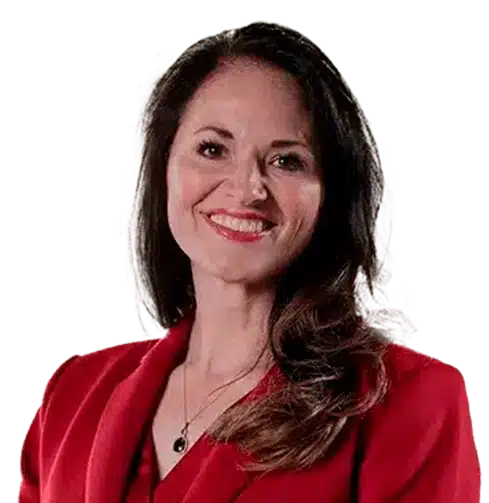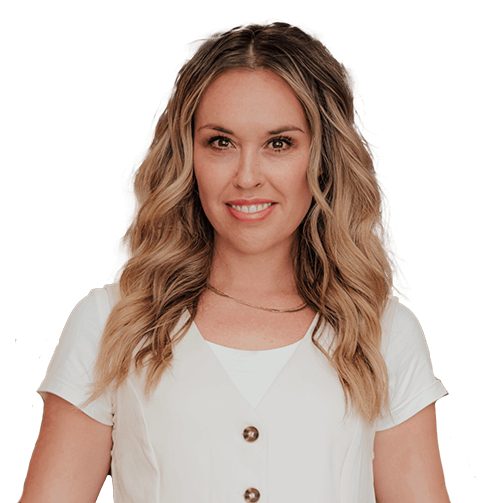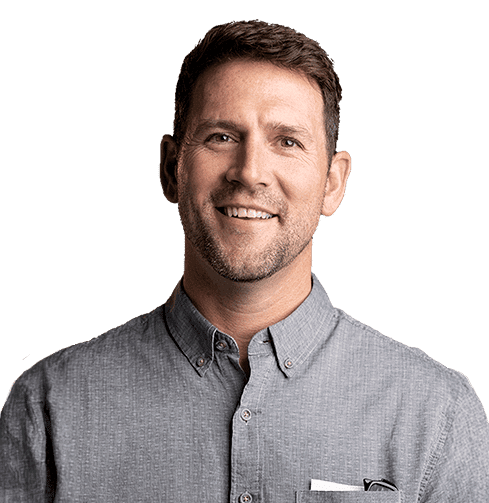Organizing Sales and RevOps for Global Growth
Overview
- What are the tradeoffs between going centralized versus decentralized? [2:00]
- What is a good balance between efficiency and effectiveness for the sales organization? [5:11]
- Is there any sort of efficiency gain when you move to a decentralized model? [9:32]
- Are there any indicators in data that tell you it’s time to make a change regarding inside sales? [11:46]
- How do you decide which functions should be centralized and which ones should stay decentralized? [15:30]
- What do you do when it comes to things like data definitions? [20:18]
- What are the key signals that tell you that it’s time to make a change? [24:19]
- Can you give a one minute summary using an example? [28:05]
Introductions
Tyler
Welcome everybody to another episode of our Fullcast Fireside Chat. I am your host, Tyler Simons. I’m the head of customer success at Fullcast. We are a go-to-market planning and execution platform. For today’s topic, we are going to be discussing a centralized versus a decentralized setup for both field operations, and also what it might look like on the RevOps side and your structure there. So we’re going to have a really interesting topic. Our guest today is Brian Selby, and I’m going to go ahead and let him introduce himself.
Brian
Great. Thank you, Tyler. Good morning and good afternoon, everybody. It’s great to be here. My name is Brian Selby. I am an independent consultant now, but have had a long, almost 30 year career in sales, sales operations, and management consulting. Spent about a decade at McKinsey and Company, was a partner there, leading the sales operations practice for McKinsey, working with a lot of companies across industries on various sales transformations, and sales operations topics. Then I also had a long stint at Microsoft, where I was building and leading sales operations, or sales excellence teams across the company. Most recently was the head of sales operations and COO at Tableau Software, which is a Salesforce company where I also built the sales operations team and led that organization for almost four years. So, long career in sales operations. It’s my passion, it’s what I love to do, and I’m really excited to be able to spend a few minutes today sharing some insights and perspectives on a very important topic for all of us in this profession, “How to think about centralization and decentralization.”
What are the tradeoffs between going centralized versus decentralized? [2:00]
Tyler
It’s probably fair to say that you’ve seen quite a few different models in your career. So we’re going to start super small. We’re going to start with field operations, and we’re going to think about a really tiny company that’s just getting started, and maybe I’ve got a team, I’m going to be expanding it this year. I’m currently centralized, everybody’s in Denver. As I’m starting to think about expanding, I want to know about “the trade offs between going centralized versus decentralized” with my field operations team and then secondly, which we’ll cover a little bit later, you don’t need to answer this, but that would be “the key indicators of when I need to make that leap into decentralization.”
Brian
For me, the principle usually comes down to “what needs to be closest to the customer.” It’s a balance between effectiveness and efficiency. There’s a lot of trade offs that go into that sort of discussion and calculation. When I say “closest to the customer,” that can also mean in our sales operations or field operations context, it can be closest to the seller, closest to those individuals that are closest to the customer. Typically what that means, when you think about a field operations team, is there’s a balance here between driving economies of scale and having things centralized so that you get those efficiencies, drive standardization, drive the most effective way and efficient way of deploying scarce resources in an optimal way, versus having resources close to the sales team so that the sales teams feel like they’re invested in what we’re doing from an operational standpoint. So that they feel like they’ve got resources that understand their business and can actually provide that level of insight and direct engagement with sales teams, whether it be in a business unit or in a geography. Those are typically the sort of questions I always ask.
When I was building teams at Microsoft or Tableau, for instance, I was evaluating “for that particular function, for that resource, should that be part of the local team? Even though they may be part of a virtual community of sales operations professionals, does it make sense to have that resource out in Europe, in the UK, or is it better to have that resource in the headquarters in Seattle, because there’s economies of scale and you don’t want to duplicate functions across multiple geographies?”
What is a good balance between efficiency and effectiveness for the sales organization? [5:11]
Tyler
I think you’re touching on a really interesting point, which is really not just about the sales people themselves, but also the resources that support the sales people and where they need to be located. Is there a size, or something that you’re seeing where you’re like, “hey, we need to have field sales in visiting customers because that’s going to be more effective.” Even though we know it’s going to be less efficient, it’s going to be more effective in the long term. What I want to understand is that balance between efficiency and effectiveness for the sales organization.
Brian
It’s a great question, and it’s the same principle at play whether you’re talking about sales resources or sales operations resources. The way I’ve always thought about sales, we had this example a lot at Tableau because Tableau kind of grew up as an inside sales organization. It was very much a land and expand model, sort of a typical software model where you’re driving growth through viral adoption, and it’s less important to have a deep relationship with a customer where you’re really understanding the ins and outs of their business and you’re building that long term growth model with increasing size of deal that you’re doing and more strategic deals over time. It’s really about just getting access to customers and following up on leads and converting those leads in the most efficient way possible. So it typically leads to an inside sales function with sales development resources, following up on leads, and then inside sellers pursuing those opportunities and converting them.
Typically with those resources, it’s more important to be efficient in deploying those resources and driving a lot of teaming, knowledge sharing, best practice sharing, and managing the utilization of those resources. So you tend to see those resources hubbed, but they’re not necessarily always hubbed in the headquarters. They will sometimes be hubbed in different regional offices so that you can take advantage of time zone differences. For instance, you don’t want to be calling on European customers from Seattle, because the time zone differences will eat you alive. Then, when you start to make that transition to more of an enterprise go-to-market model, where you’re trying to develop long term strategic relationships and you’re talking about longer sales cycles where there’s multiple interactions with the customer, when they’re spending large amounts of money, they expect to see someone in person.
Today that may be changing with the new remote model and everybody is comfortable selling on Zoom, but typically, even in today’s world, with an enterprise go to market model, you would expect to have a greater emphasis on the effectiveness of selling and having those customer facing resources in the geographies where those customers are. So you trade off a little bit of that efficiency and the pooling effects that you get with an inside sales model for having resources that can be on site, that can be embedded with a few accounts, and really get to know that customer and develop a long term relationship that leads to higher ASPs over time.
Is there any sort of efficiency gain when you move to a decentralized model? [9:32]
Tyler
Is there any sort of efficiency gain when you move to a decentralized model, like you’re talking about? Maybe around market knowledge? Like, you could say, New York is a very different market than maybe Southern California or San Francisco. There’s maybe a little bit of efficiency gain, maybe not enough to offset the fact that everyone’s decentralized, but have you seen that in your world?
Brian
Yeah, the way I look at it is, I take it one level higher, which is sales productivity, which is a combination of efficiency and effectiveness. When you do get to that point in your maturity and your growth curve, where just turning out new accounts in small transaction sizes isn’t going to get you the growth rate that you need and you need to move to more of a long term relationship, million dollar deals plus, that’s when it’s less efficient from a resource optimization standpoint. It’s actually more productive because your deal size goes up. So you do see that increase in productivity because you’re putting resources, typically more expensive resources, but higher skilled resources closer to the customer. Therefore, you’re going to see higher deal sizes and potentially even higher win rates than what you would have had if it was just a pure transactional model done through inside sales. We saw that a lot in Tableau, particularly in places like Europe where we started out with primarily inside sales out of London calling into Germany, France, and Scandinavia. Then when we started to put resources on the ground in those markets, that’s when you really start to see growth take off because you’re starting to have those relationships with government entities, or have those relationships with the larger banks and private institutions in those markets.
Are there any indicators in data that tell you it’s time to make a change regarding inside sales? [11:46]
Tyler
Are there any indicators in data that tell you it’s time to do that? Or is there a plateau that you see with inside sales that says “We’ve done really well, we’re starting to see that plateau a little bit, and now it’s time to really start to think about pushing up deal sizes, which means we need to go up into market.”
Brian
Yeah, it typically happens when that pace of new customer acquisition starts to slow down, or when the growth curve starts to flatten out.
That happened to Tableau in 2015-2016. That viral new customer acquisition land and expand model had worked beautifully. Revenue was doubling every year for a decade. Then you hit that wall where, “now we’re not getting that same rate of new customer acquisition.” The velocity of the growth isn’t doubling anymore. Now it’s starting to slow down and you realize you’ve gotten to a point where if you want to get that next growth curve, you got to do something different. You have to innovate the go-to-market model and start going after larger enterprise wide deals, because that’s where you get the efficiency where you can get thousands of users in one deal as opposed to trying to get 10,000 users, one user at a time or ten users at a time. That doesn’t scale when you start to get to, I don’t know what the number is, $100 million of ARR, $500 million of ARR.
Tyler
It’s probably different for each person. Really the key indicator is this plateauing and whatever metric that you’re really focused on, and knowing they need to switch things up. Just anecdotally, with our customers in the planning cycle, and this kind of goes back to what you’re talking about, where maybe it’s changing a little bit with the fact that everyone’s being so remote, I think we’re still seeing a lot of our customers plan, specifically the enterprise level, still very focused on geos. The goal is to get back out there because there’s still nothing better than face to face and meeting with people and building those relationships. So hopefully we all get back to that, but it’s like this, do we change? Do we flip it? We’re not really ready to go centralized with enterprise sales. It doesn’t quite make sense yet.
Brian
Just one little point, we talked about this before. Even though there is this trend towards where people can work from anywhere, and sales organizations could hire sellers in every part of the world, it doesn’t matter. I think it still does matter. There’s a limit to how distributed and how remote the sales team can be because there is a certain amount of teamwork and sales culture that you build when you’re physically in the same location. Even if you’re spending all your time on the road with customers, you do still have that home office that you can come to, or if you’re an inside sales, you have that bullpen that you can be a part of. I don’t think we’ll ever lose that, because that is part of sales. Part of the way that you maximize efficiency and effectiveness is having that connection so that you can share best practices, so you can learn from each other, and not just be on a phone in some far reaching part of the world.
How do you decide which functions should be centralized and which ones should stay decentralized? [15:30]
Tyler
Yeah, that makes sense. So let’s go back to the thing I put a pin in, which was our sales support, and let’s talk a little bit about that. You were starting to touch on how there are certain functions that when they’re centralized, you gain a lot of efficiency. But maybe there are also other functions that, if they are centralized, don’t really help with the effectiveness of that. So there’s this question of “which ones can we bring and centralize, which ones should stay decentralized,” and making these decisions. So I was wondering if you can just touch a little bit on that and maybe going back to our indicators of what makes sense and what doesn’t make sense would be helpful.
Brian
Again, it comes back to this balance of, as a sales operations leader or revenue operations leader, you’re trying to drive a level of standardization. You’re trying to drive a level of efficiency in how you do things across the company. At the end of the day, you don’t want 1000 flowers blooming when you’re trying to run a railroad. You don’t want everybody doing forecasting differently. You don’t want people training sellers using different methodologies or different tools, different content. You’ve got to have a single source of truth. A lot of the companies I work with, the number one thing they’re struggling with is just having a single source of truth so that they can actually evaluate the performance of the business. If you go too far down that distributed path where everybody can do it where they want to, and you have all the resources at the end nodes of the branch, that’s not going to work. On the same token, putting everything in the headquarters doesn’t work either, because then you don’t have the buy in, and the relevancy, and the insight into how the businesses are performing. So there’s a continuum here.
In my experience, when I’ve built teams at Microsoft, or built teams at Tableau, or advised other companies, it does come down to “certain functions fit better into one model or the other, and then there’s some that are hybrid.” So for instance, on the totally centralized side, it makes sense to have a process and systems strategy, and the decision making and build out of systems done centrally. You don’t want every country deciding what forecasting tool they want to use or how they want to implement the CRM system or taxonomy. You want one sales methodology enabled by a core set of systems. So, that to me is central. Things like incentive comp plan design, that needs to be done once. You don’t want every country manager deciding how they want to compensate their sellers, get you into legal trouble, but also it’s just not an efficient way of running a railroad.
Tyler
Can I ask about comp?
Brian
So, comp is one where operations of comp, payouts, coordinating with HR, coordinating with finance on calculating the attainment payouts, and working with payroll. That is very much a centralized model. I would not distribute that out to the field.
There are other things like transaction processing and quoting. Those are the types of things that typically, it may be a global function, but a lot of the resources are going to be in the field, because that’s where you need to be in the right time zone, you need quick turnarounds. You don’t want somebody in Germany waiting for somebody in the US to wake up to be able to process a quote or turn around a quote for the customer. So those resources, you’d typically say, put those out in the regions. In some cases, if you’re a big enough company, you can have them by country. Even if they’re located in Dublin, they might be arranged or pooled by country for language purposes, and again, customer centricity.
Then there are teams that I typically say would be in the middle, where I have had some parts that were global, that were part of the headquarters team, and then there were other parts that were in the field. So think of things like business intelligence, analytics, and reporting. Clearly, you want to have a center of excellence at the headquarters where you’re designing the data model, you’re sort of agreeing on the data definitions.
What do you do when it comes to things like data definitions? [20:18]
Tyler
What about data definitions and things like that? Do you just let everybody do whatever they want?
Brian
That’s one where, in my experience, I’ve seen the worst of this, where at Microsoft we had a situation where we had 13 geographical units and most of them kind of have slightly different definitions for “pipeline.” What was qualified over here was different over here, we had weighted pipe, high pipe, low pipe. People would pull it at different timestamps to run their pipeline reports. That’s just too hard to run a company of any scale when you’re doing it in that much of a distributed fashion. You can imagine the roll ups to the COO of the company were impossible.
Tyler
Yes, or the COO has got to remember what all the definitions are, and then try to compare and contrast and do all these different things.
Brian
Or you spend more time in a meeting debating the numbers like,
“Why is your number different than my number?”
“Well, I pulled it Friday at 05:00 P.M.”
“Well, I pulled it Friday at 08:00 A.M.”
Those kinds of things can really detract from your overall productivity as a company. So, the definitions, the data governance, things as simple as the the look and feel of standard ports, and dashboard design, that’s the kind of thing where, for the core things that you’re using every day and every week, such as pipeline reports, forecasting, dashboards, renewal of information, rates, those kinds of things. You want to have standard definitions and standard reports that go out to every region so that they can be looking at the same numbers that you’re looking at.
Now, having said that, there is a need though, to have resources on the ground in the geographies, or in the business units, that can do ad hoc analysis. There’s no way you can run a company of any scale if everybody is doing all the analytics in the center. This is just because you need to be closer to the sales teams to understand what questions they are asking, what are the performance imperatives or the challenges that they’re seeing, and then being able to interrogate the data to ask questions about the data that can lead to insight specific for that group. Whether it’s the US public sector team, or it’s the UK financial services team, or China, they’re all going to have different needs.
I had teams in both companies where there were analysts that sat in the subsidiaries, they were part of the sales operations or field operations community, but they sat in the theater or in the region and were considered part of that local sales leaders team. I think it’s important to have that connection to the business, to be able to really understand the nuances of how those businesses operate so that you can add value to that particular sales leader and that sales leaders team in terms of the types of analytics you can do and the insights that you can bring to the business. So that’s where it was a hybrid model where you have standards at the center, and you have some consistency in how you think about the business and how you think about the analytics, but then having resources in the field that could do the ad hoc analytics and be there to be responsive to the sales team. They are not just taking orders, but to be responsive and value add is important.
What are the key signals that tell you that it’s time to make a change? [24:19]
Tyler
So we talked about some of the things, right? Maybe you’re struggling with different data definitions or you’re maybe seeing multiple comp plans and things like that. I want to just briefly touch on some of the signals that people out there should take a look at and recognize when it’s time to make a change. That might be decentralization, because you’re trying to add flexibility to an analyst that’s going to go sit in the UK to work with the sales leader. It might be centralizing, in the case of standardizing definitions. Maybe it’s just as simple as “we have a lot of definitions, we need to solve this problem.” I was wondering if you can just touch on maybe some key signals or things that say, “It’s time to make a change.”
Brian
So what I’ve typically seen is, as a go-to-market leadership team, if you’re spending more time debating the numbers in meetings, and I’ve seen this in companies as successful and mature as Microsoft all the way to small companies that are just getting started, there’s a lot of churn that happens just in trying to figure out why this number is different than this number. In an hour meeting, if you’re spending the first 20 minutes just trying to figure out why these numbers don’t make sense, that’s an issue. You should be spending the majority of your time, not debating the numbers, but trying to figure out what the numbers mean, and what they tell us about how we’re doing and what we need to do differently. So that’s one marker that would say, “Okay, probably time to call time out and let’s get everything aligned in terms of definitions, data sources, standard reports, dashboards, and just get the house in order there and pivot away from that kind of decentralized approach.” By the same token, and this is something I’m a big believer in, listen to what your stakeholders are telling you.
If what they’re saying is, “the stuff that’s being produced by the central team is good, but not enough.” We need more insight, we need more relevancy. That’s great as a one size fits all, but there’s just unique requirements about the public sector business. There’s unique aspects of how government sales or education sales work, that if you don’t actually have the analytics or the training, or in some cases the sales process is tuned, then you’re missing a step. That’s where I would say that maybe that’s now an opportunity to invest in a dedicated resource or resources for that particular business.
For example, if you start going big in China, there’s a lot of nuances in the Chinese market that don’t match what you do in the US, or even in Europe. So having resources that speak the language, first of all, because an important part of what we do in sales operations is being able to communicate, but also just having people on the ground who can understand the unique aspects of doing business in China. So just listening to your colleagues and your peers, saying, “How are we providing you what you need to run your business effectively?”
Can you give a one minute summary using an example? [28:05]
Tyler
Yes, so you and I talked before this, and there’s one thing that I just thought was super interesting which was a little bit on the dotted line aspect in terms of really a matrix of org design where you almost have, like, two people that you report to. I just want a 1 minute summary of the benefits of having somebody in SalesOps, sitting in UK, directly reporting to the sales leader versus directly reporting to the global head of operations.
Brian
It’s a really important point, I’ve seen it done in a number of different ways. My personal experience is, I believe that those distributed resources, the sales operations resources, that are aligned and assigned to geographies are best suited if they report directly to those field leaders, because then they’re part of the team. They’re considered part of that sales organization, they’re trusted advisor to the sales leader, or sales manager, in that particular geography. I think they can be more effective and more influential when they’re considered part of that team. By the same token, and the same breath, also having that dotted line connection back to the central sales operations organization so that they’re part of that community and that they can actually benefit from the strategic discussions and understanding the direction, the standards, the policies, and best practices from across the organization. That’s an important balance, and I’ve run teams where that’s worked really effectively. It does require those individuals to be really good at managing and operating in a matrix where you do have two bosses. You have your direct boss, which is the sales leader, and your indirect boss, which is the sales operations leader, usually back at the headquarters.
Brian
That takes a certain skill set to build and navigate that effectively, but those who do, I’ve seen them being incredibly successful and build a very successful long term career in sales operations.
Tyler
That’s perfect. All right, so we are just out of time. Before we wrap, I do want to say that the next fireside chat is going to be February 8th and we’re going to be talking about A to Z territories. It’s going to be interesting, so hopefully everyone tunes in for that. Brian, thank you so much for joining us today. Really appreciate you imparting all of this wonderful knowledge. Now I’ve got to go think about my own org design here and how these things are going to work.
Brian
Great. Well, thank you, Tyler. It’s been a pleasure. These are super interesting and super important topics for anybody in our profession to think through. So, happy to share some lessons learned and knowledge from my past experiences. Thank you again.
Tyler
Yup. Till next time have a good one.
Brian
Thank you. Bye bye.























